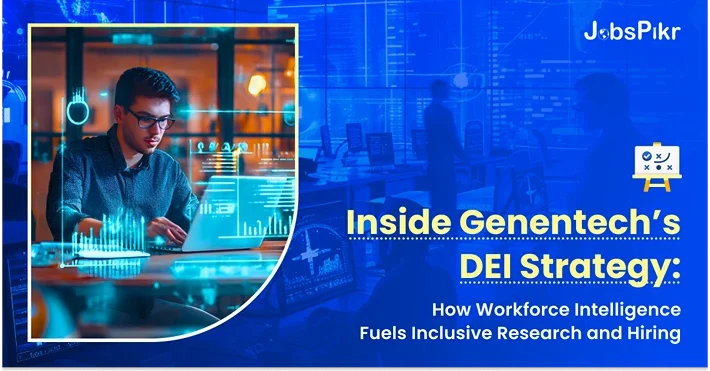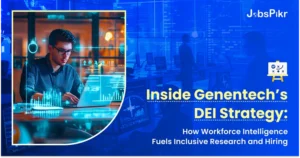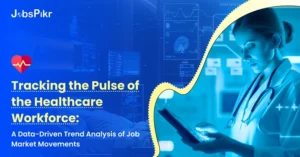How does a giant like Genentech, a pioneer since day one and now part of the Roche family, actually move the needle beyond the usual programs? The secret sauce they’re betting big on? Workforce intelligence. It’s basically about using deep, honest data about their people to power smarter decisions on DEI.
This article pulls back the curtain on Genentech’s approach. We’ll explore how they’re turning data into action to foster truly inclusive research environments and build a hiring machine that actually finds diverse talent.
Why Genentech Can’t Afford to Get DEI Wrong
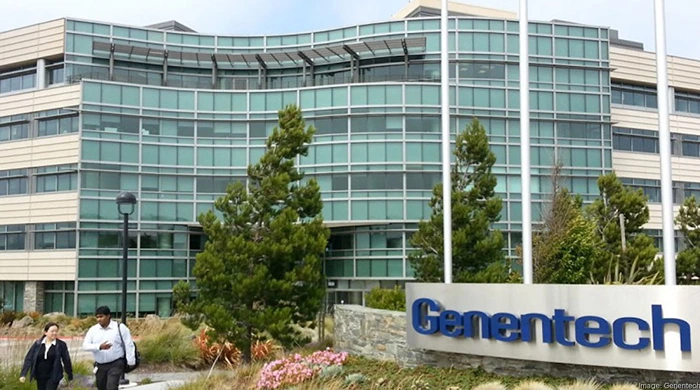
Image Source: The Business Journals
Picture this: a room full of brilliant scientists. But if they all share remarkably similar backgrounds and life experiences, what might they miss? Maybe a subtle biological variation is more common in a certain population? Or perhaps a cultural barrier affecting how patients adhere to a treatment? The brutal truth is, homogenous teams, no matter how smart, have blind spots. And in drug development, blind spots can mean treatments that don’t work as well for everyone, or worse, unforeseen side effects for specific groups.
Genentech gets this, deep in its bones. Their whole mission – “We do now what patients need next” – demands they understand the entire spectrum of patient needs. You simply can’t do that effectively if your workforce doesn’t reflect some of that incredible diversity. For them, workforce diversity isn’t a side project; it’s fundamental to how they crack tough scientific problems. It’s baked right into their recipe for innovation.
Ditching the Guesswork: Why Genentech Embraced Data-Driven DEI
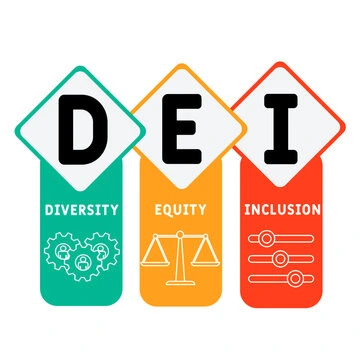
Image Source: International Master’s Program
For a long time, the DEI playbook relied heavily on training sessions, forming committees, and setting broad goals. Important foundations, sure. But Genentech realized that to make lasting, widespread change, they needed something more concrete. They needed to swap intuition for insight. Enter workforce intelligence.
Imagine trading a blurry Polaroid for a super detailed, constantly updating GPS of your organization. That’s workforce intelligence. It means systematically gathering and making sense of data about employees – not just who they are demographically, but their skills, career journeys, how engaged they feel, and critically, whether they truly feel they belong and have a fair shot. The goal? Using this understanding to knock down barriers and build a place where everyone can thrive and contribute their best work.
Genentech put serious muscle behind this. They invested in sophisticated talent intelligence platforms and built up analytics expertise. This lets them go way beyond basic headcounts (though they track those too) to understand the real, lived experiences of different employee groups. They can spot where inclusion might be lagging, see if their initiatives are actually working, and decide – based on evidence – where to focus time and money.
Putting Data to Work: How Genentech’s DEI Engine Runs
Alright, how does this workforce intelligence thing actually function day-to-day at Genentech? It touches several critical gears:
1. Setting Goals That Actually Make Sense:
You can’t aim for the stars if you don’t know where you’re standing. Data gives Genentech that honest baseline. They analyze current representation across gender, race/ethnicity, LGBTQ+ status, veteran status, and disability across all levels and jobs. This lets them set specific, measurable targets – real SMART goals. Like publicly committing to increasing women in leadership or boosting the representation of Black and Hispanic/Latinx employees in the US, especially higher up. The numbers tell them where the gaps are, making the goals meaningful, not just aspirational.
- Grounding it in Reality: Take their 2022 Diversity Annual Report. It showed progress, like women holding 48.2% of global leadership roles. But it also didn’t shy away from the harder bits, like the ongoing need to increase Black and Hispanic/Latinx representation in US leadership. That transparency, fueled by data, is key. (Source: Genentech Diversity Annual Report 2022).
2. Taking the Real Pulse: Beyond Headcounts:
Hiring diverse talent is step one. Keeping them, helping them grow, and ensuring they feel valued? That’s the marathon. Workforce intelligence helps Genentech measure the actual feel of the place. They run regular, anonymous inclusion surveys and then slice and dice the results by different employee groups. This reveals the unvarnished truth:
- Do folks from various backgrounds genuinely feel respected and like they belong?
- Do they see equal paths to grow and advance their careers here?
- Are people sticking around? If not, why might someone leave?
- Are those Employee Resource Groups (ERGs) actually making a difference, or just meeting for pizza
This deep analysis spots specific trouble zones – maybe a particular team has lower inclusion scores, or there’s higher turnover for certain groups at a specific career stage. Solutions can then be laser-focused, not scattershot.
3. Supercharging Employee Resource Groups (ERGs):
Genentech has a buzzing network of ERGs – think gNet (LGBTQ+), GENability (People with Disabilities), VETS (Veterans), and more. These are employee-led communities. Workforce intelligence helps prove its worth. By tracking stuff like membership growth, event turnout, and crucially, linking ERG involvement to things like engagement scores and retention rates, Genentech can show the real impact these groups have. It moves them from “feel-good clubs” to strategic partners, making it easier to get resources and shape their direction based on what the data says works. It directly ties ERG efforts to big-picture DEI and business outcomes.
4. Equipping Leaders with Facts, Not Feelings:
Data cuts through the fog. Leaders at Genentech get regular, customized reports on DEI metrics for their specific turf. We’re talking representation stats, their team’s inclusion survey results, and progress on relevant goals.
How Diversity in the Lab Leads to Better Medicines
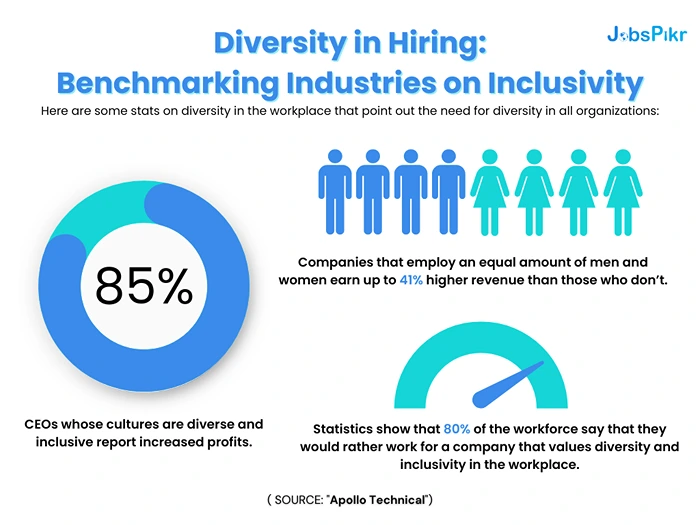
Image Source: JobsPikr Future of Jobs Report
This is where Genentech’s data-driven DEI push gets really exciting: its impact on their core mission – discovering and developing groundbreaking therapies. How does workforce diversity tangibly lead to better science?
- Wider Lens on Problem-Solving: Workforce intelligence helps Genentech actively foster teams where these diverse viewpoints aren’t just present, but actively shape the science. It’s about deliberately building that cognitive mix.
- Catching Bias Before It Catches You: Genentech uses insights from its workforce diversity efforts to train researchers on spotting and stopping this bias. Plus, diverse teams are naturally better at challenging each other’s assumptions, acting as a built-in checkpoint against biased approaches. This leads to more robust, reliable science that holds up in the real world.
- Building Clinical Trials That Actually Reflect Us: History’s kinda ugly here. For too long, clinical trials often didn’t include enough people from minority groups. The result? Treatments that might work differently (or have unknown risks) for huge chunks of the population. Genentech leverages its internal DEI learning for external impact. Understanding diverse patient needs, informed by their own diverse workforce and community ties, helps them design trials that are more accessible and truly representative. Their workforce intelligence guides outreach and trial structure, aiming for medicines proven safe and effective for all who need them. It’s science that sees everyone.
Fixing the Front Door: Data-Driven Hiring at Genentech
Building a diverse workforce doesn’t start at the interview. Genentech uses workforce intelligence to rewire how it finds and brings people in:
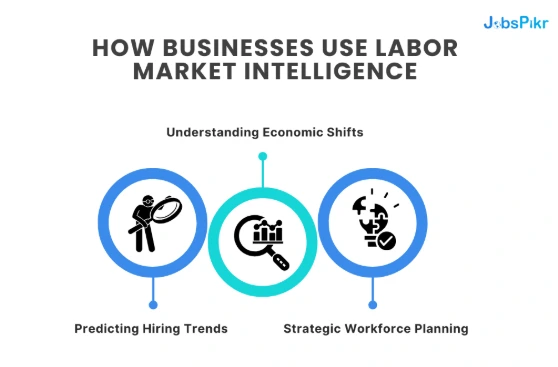
Image Source: JobsPikr Workforce Intelligence Software
- Hunting for Talent in the Right Places: Talent intelligence platforms map the landscape and show which channels (job boards, specific conferences, partnerships) actually deliver diverse applicants. Recruiters stop guessing and start targeting.
- Making Screening Fairer: Gut feeling is out; structure is in. Genentech leans hard on structured interviews and skills tests that focus on what really predicts success in a role. Crucially, workforce intelligence helps them check these tools. They analyze the hiring funnel – application rates, who gets interviews, who gets offers – broken down by demographics. If, say, women apply at a decent rate but far fewer get interview calls, that’s a red flag demanding investigation. Is the screening rubric biased? Are job descriptions turning people off? Data spots the leaks.
- Diverse Panels Are Necessary: The data backs it up: diverse interview panels reduce bias and make candidates feel more welcome. Genentech uses its workforce intelligence to identify and train employees from diverse backgrounds to be interviewers. They also set clear expectations: hiring managers need to present diverse candidate slates before interviews kick off. No more “we just couldn’t find any.”
- The First 90 Days Matter (A Lot): Getting someone in the door is half the battle. Keeping them, especially ensuring folks from underrepresented groups feel they belong early on, is critical. Workforce intelligence tracks onboarding success and early engagement signals for new hires from diverse backgrounds. Are they connecting with mentors? Finding their ERG? Feeling supported? This feedback loop helps tweak onboarding to make sure day one feels inclusive, boosting retention of that hard-won diverse talent.
What’s the Real Payoff? More Than Just Stats
Sure, Genentech publishes its numbers (and you should check their annual reports – it’s refreshingly transparent). But the real magic of their workforce intelligence approach shines in the cultural shifts:
- DEI is Everyone’s Job Now: It’s not just an HR initiative anymore. Leaders have goals tied to it. Business reviews discuss it. Data makes it tangible and shared.
- Precision Problem Solving: Instead of throwing generic programs at the wall, resources go exactly where the data shows pain points – be it leadership development for specific groups, revising policies based on survey feedback, or fixing physical accessibility in a particular building.
- ERGs with Real Muscle: Armed with data on their impact (recruitment referrals, retention boosts), ERGs can advocate powerfully for resources and shape strategy. They’re proven value-adds.
- Unlocking That Innovation Spark: Can they point to Drug X and say, “Diversity made this!”? Not exactly; science is complex. But they fundamentally believe, and the data on inclusion supports, that an environment where all voices feel safe to contribute leads to richer brainstorming, bolder ideas, and ultimately, stronger science. It’s about creating the conditions where breakthroughs are more likely to happen.
- Becoming a Talent Magnet: Let’s be real: top scientists and professionals want to work where they’re valued. Genentech’s serious, data-backed commitment to DEI and workforce diversity makes it incredibly attractive to people who care about inclusive cultures. It’s a competitive edge.
Genentech’s DEI Homework: Lessons for the Rest of Us
So, what can other companies learn from Genentech’s journey? Here’s the cheat sheet:
- Dig Deeper Than Demographics: Headcounts are a start, but the real story is in inclusion scores, belonging metrics, promotion rates, and retention – all broken down by group. That’s your culture’s vital signs.
- Sunlight is the Best Disinfectant: Sharing DEI data – the good, the bad, and the ugly – internally and often externally builds trust and accountability. Genentech is walking the talk with public reports matters.
- Anchor DEI to Your Core Mission: For Genentech, DEI is scientific excellence and patient impact. It’s not a separate thing. Find how DEI directly fuels your organization’s reason for being. That makes it unstoppable.
- Give ERGs Ammo (Data = Ammo): Equip your Employee Resource Groups with relevant workforce insights. It transforms them from support groups into strategic partners who can advocate with hard evidence.
Smarter Data, Better Science, More Inclusive Future
Genentech’s approach proves that achieving real workforce diversity and deep inclusion isn’t about compromising on excellence. It’s about expanding the search for brilliance, ensuring everyone has the runway to succeed, and systematically dismantling old barriers. It’s about using every tool available – including smart, ethical data analysis – to build organizations that are not only more innovative but also fundamentally more human.
In the fierce world of biopharma, and honestly, in any industry, companies leveraging workforce intelligence for DEI like Genentech aren’t just ticking a box. They’re building a serious, sustainable competitive advantage. Because the best ideas? They come from the widest mix of minds. And data, it turns out, is a pretty good key for unlocking that potential.
Frequently Asked Questions
What is Genentech most known for?
Genentech is best known for being a pioneer in the field of biotechnology. Founded in 1976, it was one of the first companies to apply genetic engineering to develop medicines. The company gained prominence for producing the first recombinant human insulin and later became widely recognized for its breakthrough cancer treatments, especially in areas like breast cancer, lung cancer, and leukemia.
Is Genentech owned by Pfizer?
No, Genentech is not owned by Pfizer. It is a wholly owned subsidiary of Roche Holding AG, a global healthcare company based in Switzerland. Roche completed its full acquisition of Genentech in 2009. Although Genentech operates with a degree of independence, it functions under the Roche Group umbrella.
What are Genentech’s biggest drugs?
Genentech has developed several blockbuster drugs that have had a significant impact on modern medicine. Some of its most successful and widely used drugs include:
Lucentis (ranibizumab) – Used to treat age-related macular degeneration (AMD) and other eye disorders
Herceptin (trastuzumab) – A targeted therapy for HER2-positive breast cancer
Avastin (bevacizumab) – Used to treat various cancers, including colorectal, lung, and kidney cancer
Rituxan (rituximab) – Used for non-Hodgkin’s lymphoma, rheumatoid arthritis, and chronic lymphocytic leukemia
Actemra (tocilizumab) – An immunosuppressive drug used for autoimmune conditions like rheumatoid arthritis
Is Genentech considered Big Pharma?
Genentech is often described as biotech, rather than traditional “big pharma,” because of its focus on biologically derived treatments and its roots in genetic engineering. However, due to its size, influence, and integration into Roche, it does operate at the scale of major pharmaceutical companies.
So while not “big pharma” in the classic sense, Genentech is certainly a major player in the global pharmaceutical and biotechnology industry.
